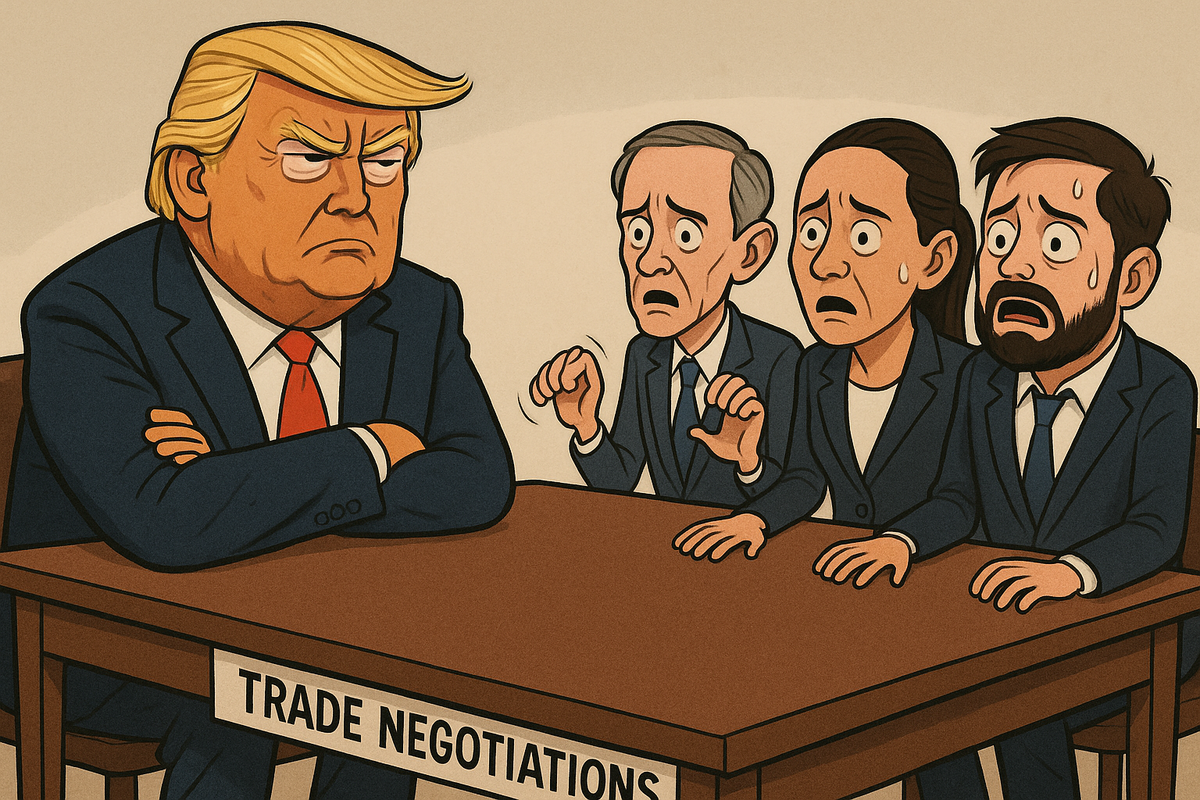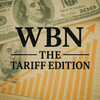
By Miika Makela | WBN News Global, WBN News Vancouver, WBN Finance| July 11, 2025 | CANADA
President Donald Trump announced a potential 50% tariff on copper imports during a Cabinet meeting. Targeting major suppliers like Chile, Canada, and Mexico, the proposal appears as a calculated maneuver rather than a finalized policy. Below, we outline the tariff threat, its motivations, its role in trade negotiations, its domestic political aims, and the economic challenges it faces, with detailed insights into U.S. copper consumption, production, and import volumes.
Tariff Threat Overview
Trump’s proposed 50% tariff on copper imports seeks to address the U.S.’s heavy reliance on foreign copper, which constitutes approximately 60% of its annual consumption. In 2024, the U.S. consumed 1.85 million metric tons of refined copper, while domestic production reached only 1.12 million metric tons, leaving a gap of about 730,000 metric tons met through imports, primarily from Chile (48%), Canada (24%), and Mexico (15%). Modeled after existing 50% tariffs on steel and aluminum, the proposal stems from a February 2025 Section 232 investigation that exposed vulnerabilities in the U.S. copper supply chain, particularly due to China’s dominance in smelting, which processes over 40% of global copper. Commerce Secretary Howard Lutnick indicated potential implementation by late July or early August 2025, though the ambiguous timeline suggests room for negotiation.
Tariff Threat Motivations
The tariff proposal serves dual purposes: economic leverage and political messaging. By threatening steep duties, Trump aims to pressure copper-exporting nations into offering favorable trade terms or securing long-term supply agreements to stabilize U.S. access to copper. The rhetoric of countering “unfair trade practices” and revitalizing domestic jobs resonates with industrial communities, bolstering political support in key regions. A 13% surge in Comex copper futures following the announcement reflects market anticipation, strengthening Trump’s bargaining position.
Copper Tariff as a Trade Negotiation Tool
The tariff threat functions as a bargaining chip to extract concessions from major suppliers. Chile, which exported $6 billion in copper to the U.S. in 2024, is a primary target, alongside Canada and Mexico. The strategy echoes past trade negotiations, such as the EU’s recent delay of alcohol tariffs after whiskey trade discussions. However, copper’s critical role in global supply chains—used in wiring, electronics, and renewable energy infrastructure—limits the feasibility of prolonged tariff disputes, as exporting nations could retaliate, potentially disrupting U.S. markets.
Domestic Political Strategy
The tariff proposal also advances a domestic agenda to accelerate copper mining projects. Trump has emphasized expedited permitting for initiatives like Arizona’s Resolution Copper mine, which could produce 180,000 metric tons annually but faces regulatory delays. Streamlining approvals appeals to voters in industrial states like Arizona, Michigan, and Nevada, aligning with a narrative of economic nationalism. With domestic production at 1.12 million metric tons against a consumption of 1.85 million metric tons, closing the 730,000-ton import gap through new mines could boost local economies and reduce reliance on foreign copper.
Economic Reality Check
The tariff’s practicality is undermined by economic realities. U.S. copper demand, growing 3-4% annually, is driven by re-industrialization, infrastructure upgrades, and electrical grid modernization. In 2024, the U.S. consumed 1.85 million metric tons of copper, with 60% (1.11 million metric tons) used in electrical and electronic products, 20% (370,000 metric tons) in construction, and 10% (185,000 metric tons) in transportation. Domestic mines, producing 1.12 million metric tons, rely heavily on facilities like Arizona’s Morenci and Utah’s Bingham Canyon, but output growth is constrained by long permitting timelines and high capital costs. Imports, totaling 730,000 metric tons in 2024, are critical to meeting demand.
Electricity demand is projected to rise 15-25% by 2030, requiring an additional 250,000 to 350,000 metric tons of copper annually for grid upgrades, electric vehicles, and renewable energy systems. A 50% tariff could nearly double import costs, increasing expenses for industries like automotive (e.g., $200 per electric vehicle), electronics, and construction. This could translate to an estimated $1,200 annual cost increase per household due to broader tariff impacts. Scaling domestic production to offset imports is challenging, as new mines require 7-10 years to become operational. Retaliatory tariffs from suppliers like Chile could further strain global supply chains, risking shortages and price spikes.
Conclusion
Trump’s 50% copper tariff proposal is a bold play for trade leverage and political points, but it’s a losing bet in the long run. With U.S. copper consumption at 1.85 million metric tons, domestic production stuck at 1.12 million metric tons, and imports covering a 730,000-ton shortfall, slapping on high tariffs would hammer industries and jack up costs for consumers. The math doesn’t add up—new mines won’t magically close the gap, and trade wars with suppliers like Chile risk market chaos. This plan needs a hard pivot to avoid economic fallout.
References:
- U.S. Geological Survey. (2025). Mineral Commodity Summaries 2025. Retrieved from https://www.usgs.gov/centers/national-minerals-information-center/mineral-commodity-summaries
- U.S. Energy Information Administration. (2025). Annual Energy Outlook 2025. Retrieved from https://www.eia.gov/outlooks/aeo
- Chilean Copper Commission (COCHILCO). (2024). Annual Report on Copper Exports. Retrieved from https://www.cochilco.cl
- Comex Market Data. (2025). Copper Futures Performance. Retrieved from https://www.cmegroup.com
Miika Makela, CFA



